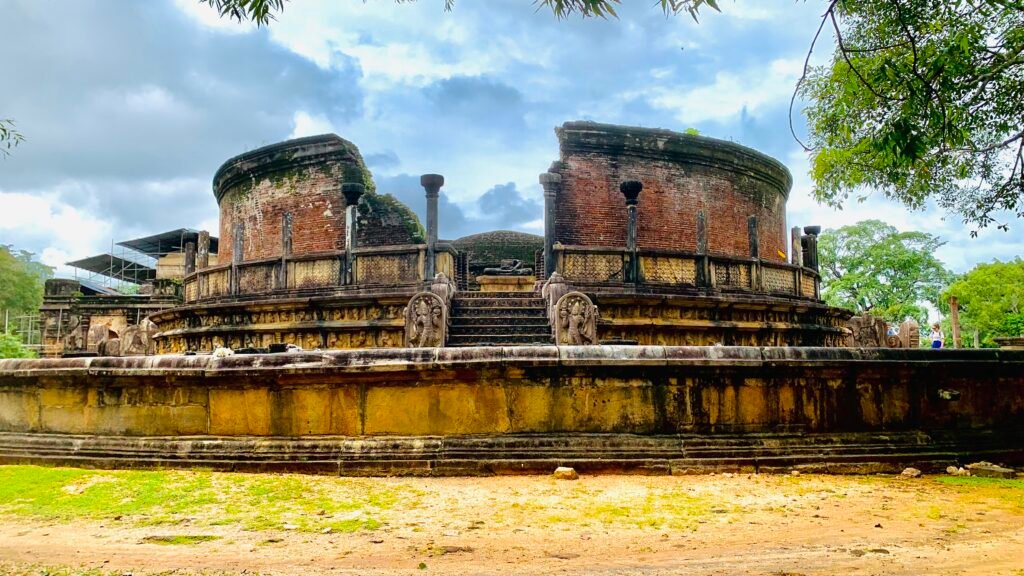
Nestled amidst the lush greenery and historical wonders of Polonnaruwa, Sri Lanka, the Vatadage stands as a testament to the island nation’s rich cultural and architectural heritage. This remarkable edifice is a true marvel, boasting intricate craftsmanship and a profound connection to Buddhism. In this SEO blog article, we’ll take you on a virtual journey through the Vatadage, shedding light on its historical significance, architectural marvels, and the role it plays in Sri Lanka’s tourism landscape.
The Vatadage, dating back to the 12th century, is one of the most iconic structures of the ancient city of Polonnaruwa, a UNESCO World Heritage Site. This circular relic shrine played a pivotal role in preserving the sacred Tooth Relic of Buddha, making it a revered pilgrimage site for Buddhists. Its construction was commissioned by King Parakramabahu I, a ruler known for his patronage of Buddhism and architectural prowess.
The Vatadage showcases superb craftsmanship and architectural ingenuity, standing as a prime example of Sinhalese architecture during the Polonnaruwa period. Here are some key architectural features that make it a masterpiece:
Circular Design: The Vatadage’s unique circular design is a remarkable achievement, symbolizing the infinite path of enlightenment. Its concentric terraces lead to the central stupa, creating a sense of harmony and tranquility.
Intricate Stone Carvings: The structure is adorned with intricate stone carvings, featuring depictions of deities, dancers, and intricate floral motifs. The Moonstone at its entrance is a masterpiece of sculpted artistry.
Guard Stones: Two beautifully carved guard stones, each featuring a pair of mythical creatures, flank the entrance to the Vatadage, welcoming visitors with a sense of protection and grandeur.
Relic Chamber: At its core, the Vatadage houses a relic chamber designed to enshrine the sacred Tooth Relic of Buddha. The chamber is encased within a magnificent stone carving depicting the four guardian deities.
Stupa: The central stupa is a towering structure crowned with a harmika (square platform). It is surrounded by a set of four Buddha statues, each facing a cardinal direction, symbolizing enlightenment spreading in all directions.
Today, the Vatadage is a major tourist attraction, drawing history enthusiasts, architecture buffs, and spiritual seekers from around the world. Its historical significance and artistic grandeur make it a must-visit site for anyone exploring the cultural heritage of Sri Lanka.
Visitors can explore the Vatadage and its surroundings, taking in the serene ambiance and marveling at the craftsmanship of a bygone era. The intricate stone carvings and ancient relics transport you back in time, allowing you to connect with the rich history of Polonnaruwa.
Preserving the Vatadage is of utmost importance, given its historical significance. Conservation efforts are ongoing to protect this architectural gem from the ravages of time and modernization. Visitors are encouraged to follow ethical tourism practices by respecting the site’s sanctity, refraining from touching carvings, and adhering to guidelines provided by authorities.
The Vatadage in Polonnaruwa stands as a testament to the architectural brilliance and spiritual devotion of ancient Sri Lanka. Its circular design, intricate stone carvings, and historical significance make it a must-visit destination for anyone exploring the island’s cultural heritage. As you wander through this sacred site, you’ll not only discover the architectural marvels of the past but also experience a deep connection to the profound spirituality that has shaped Sri Lanka’s identity. Embrace the opportunity to explore this enigmatic relic shrine, and let its history and beauty captivate your senses as you embark on a journey through time in Polonnaruwa.

Location: The Vatadage is located in the ancient city of Polonnaruwa, which is situated in the North Central Province of Sri Lanka.
